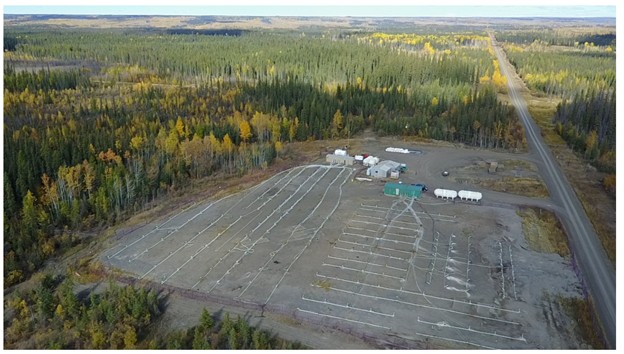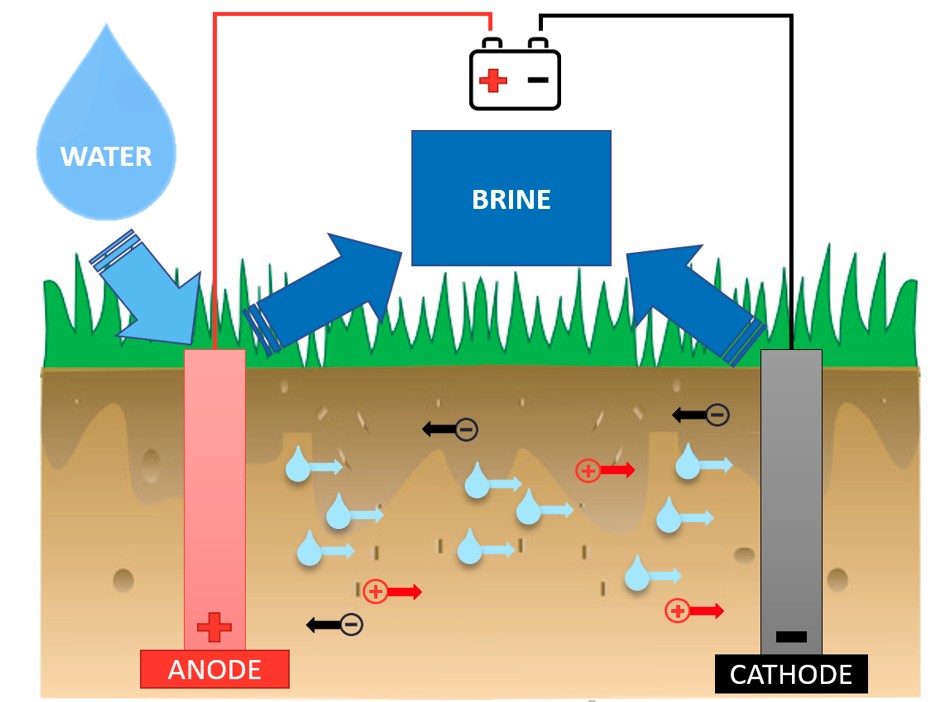Salt Impacted Site Treatment EK3
The EK3 technology removed approximately 3.5 metric tonnes of salt within a three month period.
The Situation
Salt contamination in soil and groundwater is one of the most threatening environmental issues in Canada and is a serious environmental concern throughout the world. Salt-impacted sites can occur as a result of geologic formations (natural salinity), or they can be the result of anthropogenic activities such as road salt application, agriculture and industrial spills. Salt-impacted soils are an unavoidable problem in Western Canada as a result of upstream oil and gas production. This is because brine and hydrocarbons often occur together geologically.Brine water contains sulphates, bicarbonates and chlorides of Na, Ca and Mg, with NaCl being the most prevalent brine salt.Although salt is neither mutagenic nor carcinogenic, and is not generally considered toxic to animals, there are numerous environmental impacts associated with excess salt in soil. These include degradation of chemical and physical properties of the soil, diminished groundwater quality and impaired plant growth. Plants are perhaps the most vulnerable sector of the biosphere to salt. They often exhibit drought stress symptoms in salt-impacted soils despite the presence of adequate water because the resultant increases in osmotic pressure diminish water uptake by the plants. Furthermore, the presence of excess ions in the soil can interfere with nutrient availability and numerous plant metabolic processes.Salt cannot be degraded; therefore, remediation of salt impacted sites is achieved only by removing salt ions from the soil.

The Solution
Ground Effects has developed the EK3 technology that will remediate salt impacted soils, specifically low permeability soils in situ.
EK3 utilizes both electroosmosis and electromigration principles to remove the contaminants from the soil. Electroosmosis moves the groundwater from the anode to the cathode which aids in flushing of the contaminants from the soil. Electromigration occurs when the electrical field created causes the salt to be separated into Na+ ions which move towards the negative electrode (cathode) and Cl- ions which move towards the positive electrode (anode). Once collected, the ions can be extracted by vacuum extraction and flushing techniques.

The Results
The EK3 technology removed approximately 3.5 metric tonnes of salt over a 3 month period from an impacted site in Northern Alberta. The site consisted of a soil volume of approximately 43500m3. This included 2.1 metric tonnes of chloride and over 1.4 metric tonnes of sodium.
The oil and gas industry continues to be challenged with large scale remediation obligations for abandonment of oil fields, particularly in remote locations. The EK3 salt remediation technology offers a cost effective and efficient treatment option. This includes benefits such as:
1. Extraction of concentrated salt contaminants from the ground without excavation
2. Containment of salt contaminants within the EK remediation zone and does not dilute or push contaminants deeper into the ground.
3. Facilitates strong ion movement laterally towards electrodes, especially in the top 3 meters of ground.
4. Does not use water to wash or flush the soil.
5. Full field deployment with minimal operator intervention/supervision
6. Offers significant cost reductions over traditional soil remediation technologies.
